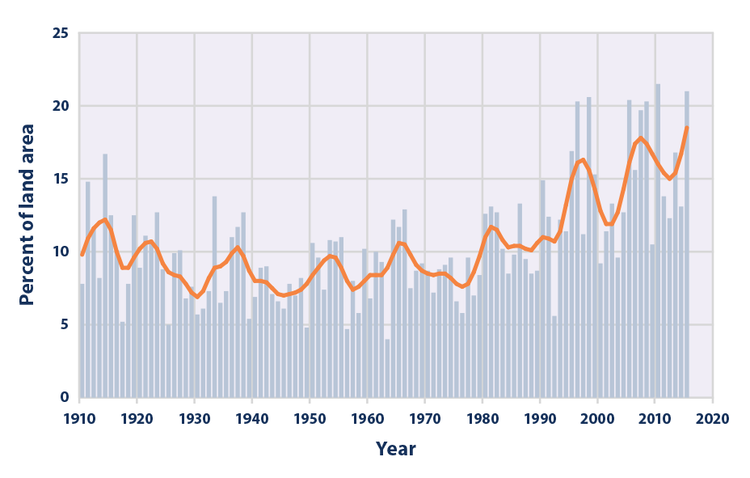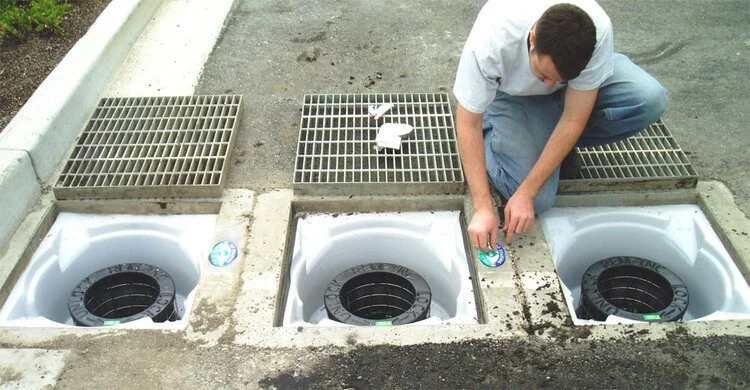811 - CALLING IS A MUST, BUT NOT ENOUGH
A week ago today, National 811 Day was commemorated. It’s a national awareness campaign to highlight the need to call 811 before digging – in our yards or at a construction site. Many organizations in charge of utility assets use this day to promote the importance of calling 811 BEFORE digging. For example, The Southern Gas Company did this great “No Diggity” video to help promote awareness.
A Blog by Emily Pierce, PLS, CFedS
There’s a better way.
A week ago today, National 811 Day was commemorated. This means a lot to me because I know first hand how important it is that people make the 811 call before digging. But I also know that there is a lot more to underground safety than more 811 calls. We need better methods for identifying and validating what is underground.
According to the Pipeline and Hazardous Materials Safety Administration (PHMSA), ruptured gas distribution systems have killed an annual average of 10 people and injured an average of 46 more.[i] Excavation damage has almost always been the cause of ruptures that resulted in fatality, an injury requiring in-patient treatment, or damages more than $50,000.
For firms that are excavating every day, the need to “Know what’s below” is essential for safe operations.
The latest DIRT Report (Damage Information Reporting Tool) shows that damages caused by underground utility strikes are increasing for the fifth consecutive year. In 2019, the cost of this damage was estimated at $30 billion. The most common cause listed for these utility strikes was “failure to notify”, meaning no one called 811 before excavation. But other causes, such as excavation issues and locating issues are also leading causes for damage.
The truth is that we don’t really know how much damage is done by excavation errors. In many sectors, there are no legal requirements for reporting utility strikes. Although a growing number of companies are voluntarily reporting, the data provides a very incomplete picture.
The National Society of Professional Surveyors (NSPS) is working to raise the visibility of the need for accurate geospatial data for infrastructure projects that include transportation, energy, communications, water supply, and other systems. NSPS is one of the thirteen members of the Coalition of Geospatial Organizations (COGO) that seek to speak with one voice on geospatial data and policy issues. This group provides input to the Federal Geographic Data Committee that has developed a National Spatial Data Infrastructure Strategic (NSDI) Plan.
These groups were heavily involved in the Infrastructure Bill working its way through our federal legislative process. They are working to ensure that the federal investment in infrastructure improvements include geospatial data components to increase accuracy and precision in our infrastructure investments, like transportation, high-speed internet, power and gas utilities, rails, and clean water.
Trends toward the adoption of new technologies that help create accurate data to help us “Know what’s below” are strengthening. I know that surveyors are embracing new technologies to that help create underground surveys. Along with GIS, LiDAR and GPR, other tools are making the job of underground surveying much easier.
There’s a better way - connected RFID
For example, over the past year, I’ve been working with a number of utilities who are using Connected RFID to track and manage infrastructure assets. RFID is a key technology that enables direct connection between the real world and the geospatial world.
One of the most persistent and thorniest problems of any kind of geospatial data is accuracy. If the data isn’t spatially accurate, then its usefulness is massively reduced. I know I’m preaching to the choir. We surveyors spend our lives creating and correcting geospatial data and understand the importance of accuracy.
A direct connection between an infrastructure asset and its data is of tremendous value, and that’s exactly what InfraMarker RFID does. It’s pretty simple – an RFID tag is affixed to an asset (above or below ground). Each RFID tag has a unique ID that is linked to that asset’s record in the GIS system using software on a mobile device. Once linked, a field technician can scan a tag and automatically load that asset’s specific record for updating. No need for a line of sight with RFID, so this makes InfraMarker perfect for underground utilities.
More and more, gas, water and telecom utilities are adding InfraMarker RFID to enhance the accuracy of their geospatial data and make life easier for field technicians. As a surveyor, think of how much easier our jobs would be if we could actually scan buried markers and have them identify themselves . . . or use the RFID scanner to identify nearby buried utilities.
The advantage of InfraMarker is the accuracy it delivers to help utilities better manage their infrastructure assets. A value-add is that this data could also help prevent excavation strikes, helping everyone “Know what’s below”.
While we know that 811 has some inefficiencies, it is the best first line of defense for damage prevention for a property owner and the utility. Without proper locating subsurface utilities before excavation, the results can be costly.
Interested? Contact me for more info - info@inframarker.com
[i] https://thestoddardfirm.com/premises-liability/construction-accident-injuries/gas-line/
A DAM-AGING STORMWATER REPORT CARD FROM ASCE
Urban flooding results in more then $9 billion in damages annually, while federal funding to support stormwater maintenance/upgrades averages about $250 million annually. It’s not surprising that stormwater infrastructure is in bad shape and has earned a grade of “D” from the ASCE.
Blog by Tom Hershberger, MS, MBA
Infrastructure is a hot topic now, and it’s long overdue for more than just discussion during National Infrastructure Week.
The American Society of Civil Engineers (ASCE) have been focused on this topic since 1988, producing a regular report card for US infrastructure. At first, there were 12 categories, and with this year’s addition of Stormwater, there are 18 categories.
Urban flooding is problem #1
Urban flooding results in more then $9 billion in damages annually, while federal funding to support stormwater maintenance/upgrades averages about $250 million annually. It’s not surprising that stormwater infrastructure is in bad shape and has earned a grade of “D” from the ASCE.
Stormwater runoff is defined as rain or snowmelt that travels over impervious surfaces or cultivated areas, then is collected and drained into streams, rivers, lakes, bays or oceans. These systems of stormwater conveyance take many forms, from canals, to sewers, detention ponds and constructed wetlands.
In the US, there are approximately:
3.5 million miles of storm sewers
270 million storm drains
2.5 million stormwater treatment assets
Stormwater systems are a mix of publicly-owned (by local, state and the federal government) and privately-owned assets. The EPA is tasked with regulating all of this, but their focus has primarily been on Municipal Separate Storm Sewer Systems, known as MS4s. Because of this, most municipalities have an asset management / maintenance program.
On the other hand, corporate property owners or homeowners associations are not routinely monitored, which leads to deferred maintenance and increases the likelihood of urban flooding and increases the threat of pollution from runoff.
Stormwater conveyance systems have a lifespan of 50-100 years (depending on what materials were used in the original construction, such as reinforced concrete, corrugated metal or PVC). Because most stormwater systems are paid for by local fees or taxes, that often means that maintenance and/or replacement have been postponed, leaving many communities with dangerously outdated stormwater infrastructure.
Even in communities where stormwater systems were constructed more recently (within the past 30 years), it’s likely that they weren’t designed for today’s capacity needs, especially with the growing frequency of high-precipitation events.
This figure shows the percentage of the land area of the contiguous 48 states where a much greater than normal portion of total annual precipitation has come from extreme single-day precipitation events. The bars represent individual years, while the line is a nine-year weighted average.
Beyond flood mitigation
Stormwater runoff causes lots of problems besides flooding. Every year, an estimated 57 million Americans are sickened by contaminated water in recreational areas. An 2019 analysis of fecal indicator bacteria sampling data from beaches in 29 coastal and Great Lakes states and Puerto Rico, reveals that 386 beaches – nearly one of every eight surveyed – had potentially unsafe levels of pollution on at least 25 percent of the days that sampling took place that year.
Additionally, other types of pollutants flow into our waterways when stormwater is not controlled. For example, the quantity of used oil from a single oil change can pollute up to one million gallons of fresh water. Then there’s all the litter, construction debris, fertilizer, pesticides, road salt, pet waste, etc., that regularly flows into storm sewers. In an up-to-date stormwater system, these pollutants can flow into swayles, rain gardens where they can be held and filtered, instead of flowing directly into a stream, lake or ocean.
It’s vitally important that these systems are brought up-to-date.
Learning to make the most of what we have
Additional money for infrastructure may be on its way, but in the meantime, many municipalities and stormwater management organizations are already executing a plan to be compliant with EPA regulations and plan for the future.
The recommended first step toward improving a stormwater system is to have a comprehensive understanding of the location and condition of all existing stormwater assets. This can be very challenging because oftentimes in municipalities, these records are kept in different departments, housed in different databases or even kept in paper files.
Fortunately, technology can really help with this issue. Geographic Information Systems (GIS) are increasingly being used to manage all types of municipal activities. GIS location-based information is extremely useful in managing stormwater assets spread across a specific geographic area. Today, municipalities are busy creating a digital twin of their existing city, which is a great concept that has real-world benefits but also faces real-world disconnects.
Example images from a geographic information system (GIS) illustrating storm-sewer infrastructure.
One very common disconnect is that the assets a digital map displays are not what maintenance workers find when they come to a job site. For example, they may be tasked to perform an inspection or maintenance on a catch basin located on a specific intersection. They use the GPS to guide them to that location. Upon arrival, they see not one, but four or even eight catch basins in that area. So they have to invest time in working with the office to identify the right basin, or they just pick one and hope it’s the right one.
Unfortunately, guesswork is what the GIS digital twin was supposed to eliminate.
There’s a simple solution that can permanently resolve that issue, while simplifying field documentation. It involves marking assets with an RFID tag, then connecting those tags to their records in the GIS using a standard mobile device.
InfraMarker connected RFID makes all the difference
When marked with RFID tags, field workers no longer need to guess which asset to work on. They can simply have assets identify themselves with a quick read of the RFID tag. Once they identify the asset they need to work on, the right form will pop up and they can complete the work and move on.
InfraMarker RFID-enabled markers directly connect the physical and digital worlds in a way that delivers fast, accurate and auditable asset management. This approach fits into existing field workflows while leveraging existing GIS/Asset Management platforms. InfraMarker connects specific infrastructure assets to their unique digital records, providing accurate, auditable and actionable data to asset managers, often in real time.
RFID-enabled asset management not only ensures that the digital twin is accurate, it generates an audit trail that meets the EPA regulations for compliance.
This simple solution is now being used for all kinds of infrastructure assets across the country, including municipal stormwater assets.
See a quick video of how InfraMarker Connected RFID works to mark and manage stormwater assets here.
To learn more, contact us!.










